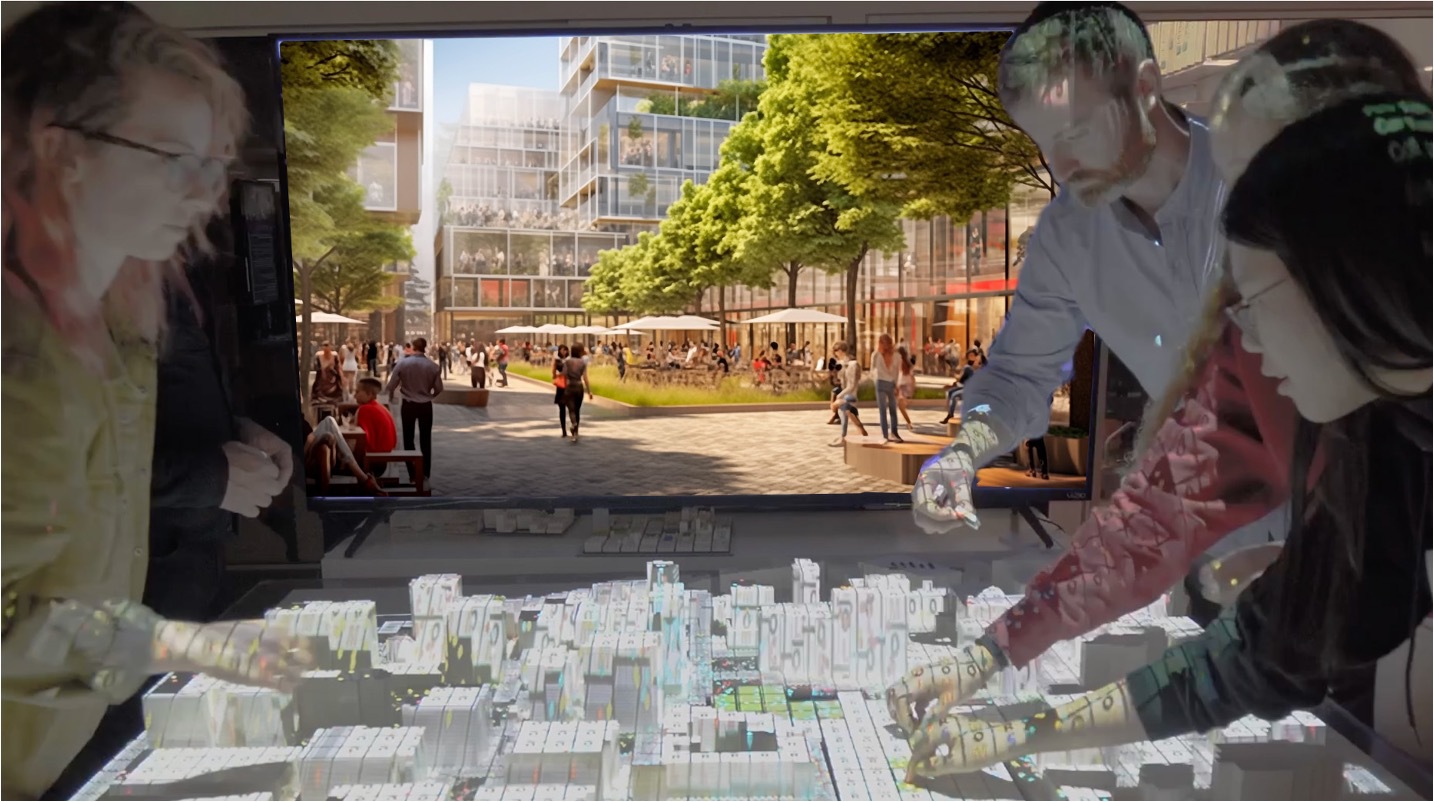
This article is the ninth in a series focusing on the Architecture of the Metaverse. Dorr has collaborated with John Marx, AIA, the founding design principal and Chief Artistic Officer of Form4 Architecture, to present monthly articles that seek to define the Metaverse, explore its potential, and understand its constraints. In this feature, architect John Marx interviews Heather Gallagher, an international expert in transformative events and the experience economy and former Head of Technology at Burning Man.
I had the pleasure of spending several hours with Peter Hirshberg, chairman, and Anna Fedorova, principal at the Maker City Project. Both have extensively explored the potential of new technologies, particularly generative AI and data science, to transform and enhance how we design, govern, experience, and improve our cities. What follows is a distillation of the complex and ever-evolving opportunities these technologies present.

Cities are among the most complex systems on Earth. Over the past century, managing their numerous functions—such as planning, permitting, logistics, and operations—has led to tremendous urban development and flourishing. However, it has also created bureaucracies laden with rules, requirements, oversight mechanisms, and information silos. A key question today is whether these mechanisms can scale or if they inevitably become slow and sclerotic. This question is particularly urgent in our post-pandemic era, given the various crises cities face: housing is painfully unaffordable, downtown land use needs reimagining as shopping and office work decline, and homelessness remains a convoluted challenge. How can we make constructive decisions amidst such complexity in an integrated way? The hope—and remarkable opportunity—lies in the convergence of emerging AI and data science technologies, which can address the multifaceted complexities of civic life, reduce bureaucracy, improve city governance, and provide powerful new tools for urban planning and civic engagement.
Today’s high-performance computing powers technologies such as agent-based modeling, generative AI, complex system modeling, and AR/VR. When used wisely, these tools have unprecedented potential to enhance our collective agency and accelerate improvements in urban life and governance. They can simulate real economic and behavioral data in civic contexts and quickly visualize complex ideas, allowing us to demonstrate the practical impact of desired policies and more effectively inform and persuade communities to participate in civic decision-making. We might think of this as the “fifth estate”—a new form of collective agency enabled by accessible new technologies that empower citizens and leaders to hold institutions accountable and take collective action toward mutually beneficial outcomes.

What kinds of new tools are emerging?
Historically, urban tools—from the observational tactics of William H. Whyte to primitive computer models, to the intelligent interfaces of Smart Cities—have helped us understand and shape urban environments. Yet, throughout computing history, reliably predicting specific policy outcomes in complex urban contexts has remained elusive. Today’s technologies are revolutionizing computational urban modeling and transforming our understanding of what’s possible in urban governance and collaborative civic engagement. By unlocking powerful interactive and predictive capabilities, 21st-century digital tools are propelling us from classic collective intelligence to a new era—where civic problems are not merely observed and discussed but dynamically simulated and visually mapped, paving the way for better-informed communal actions and policymaking.
For example, Agent-Based Modeling (ABM) enables digital simulations of real-world environments that respond to inputs from individual agents and dynamic interactions between them, including feedback loops, unintended consequences, system shocks, and limitations. By accurately representing behaviors and interactions of individual agents and institutional entities (e.g., households, banks, businesses) within complex socio-economic systems, ABM serves as a powerful predictive tool in economics and policy research. This innovative approach significantly enhances our ability to provide reliable insights and understand the effects of complex policy interventions before implementing them in real life. A notable example is researchers at Oxford and the Bank of England using agent-based modeling to study the effects of macroprudential policy interventions on the UK housing market.




